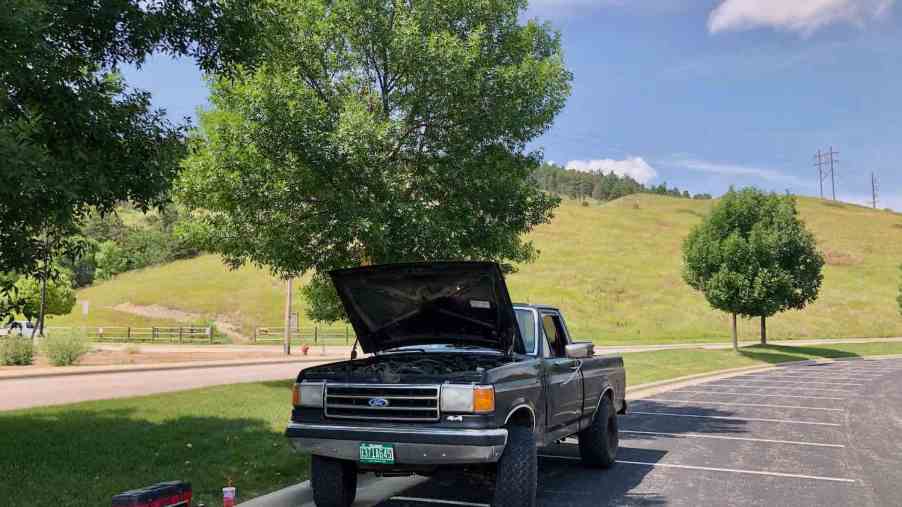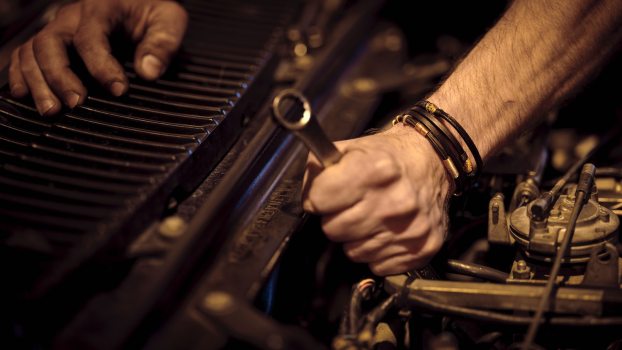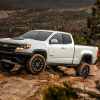
Are Radwood-Era Classics The Worst Vehicles to Work On?
“Not again!” Matt threw his hands in the air as my Radwood-Era classic 1988 F-150 sputtered and stalled its way along I-80. He was riding along for part of my cross-country drive. But the trip had slowed to a crawl as we spent days troubleshooting an intermittent stumble. After testing every component I could think of, I was out of ideas. With no other choice, I rented a storage unit, limped my truck inside, and flew to my final destination. Par for the course with an ’80s or ’90s truck project.
The problem with 1980s and 1990s trucks and cars
Classics from the 1980s and 1990s are gaining popularity among hobbyists and collectors. There is even a dedicated 80s and 90s car show series called “RADwood.” Its name is a play on the Goodwood Revival, which combines pre-1967 classics and crowds in period costumes.
With every new generation of vintage car enthusiasts that comes of age, a new generation of used cars becomes “classic.” But 1980s and 1990s cars have a problem: of all the vehicles ever made, these are among the most difficult to repair.
How can this be true? By the 1980s and 1990s, many automakers implemented complex systems to reduce emissions and increase fuel efficiency. Many of these systems were controlled by computer chips which were larger and more delicate than modern chips. Most of these vehicles were reliable when new, but as they age, components naturally wear. And with so many components, it can be impossible to tell what is keeping your classic car or truck from running.
Things got so bad that in 1996 the U.S. Government required all automakers to implement a uniform “Onboard Diagnostics” (OBD) system. This system (called OBD II) enables any mechanic or enthusiast to connect a “Code Reader” to a vehicle’s diagnostic port. This handheld computer communicates with the vehicle’s computer and lists malfunctioning components so you can repair or replace them. The lack of this feature in ’80s and ’90s trucks older than 1996 can be a real pain when troubleshooting issues.
Abandoning my 1988 Ford F-150
My 1988 Ford F-150 performed admirably for the first 1,000 miles of my cross-country drive. Then while I was cruising along the highway, my engine cut out. I felt the truck stumble and looked down to see the tachometer plummet. Then the engine caught, the gauge climbed, and the truck lurched forward.
And by Iowa F-150 says “We’ll see about that” pic.twitter.com/POMYleBObl
— Henry Cesari (@HenryCesari) August 4, 2023
I thought, That’s odd. I hope it doesn’t happen agai– And at that moment, the truck stumbled again. I worried the injectors had clogged up from hours lugging along in overdrive, so I tried an “Italian tune up” gunning the engine up to 4,000 rpm. And the problem went away…for about ten miles.
Every time I pulled over to test some components on the truck, and let it cool down, the problem went away for about 40 miles. But whatever I tried, the F-150’s stumble persisted.
I started by swapping my fuel filter, pump, and pump relay–to eliminate a fuel delivery issue. I then began to troubleshoot spark, finding my coil was out of the specified tolerance and replacing that. I also swapped in a new throttle position sensor. But none of these new parts fixed my truck.
Matt and I were driving to grad school in Colorado. So after several days working on the truck, we had no choice but to park it in a storage unit in Des Moines, Iowa, and fly to school to catch our first class.
Fixing the 1988 Ford
It was during a phone call with my brother, who is an automotive engineer in Detroit, that I finally stumbled on what was causing my F-150’s stumble. I had been looking for what was wrong with my F-150. He urged me to search for a problem common to all eighth-generation F-150s. So what’s the problem with these ’80s and ’90s trucks?
If you love quirky old vehicles, your fellow enthusiasts are your greatest resource.
According to AutoSafety.org, Ford settled a class action lawsuit over ignition system failures in 2002. The claim argued that Ford had knowingly mounted its heat-sensitive “Thick Film Ignition” (TFI) module sandwiched between the distributor and the bottom of the engine, of 22 million vehicles made between 1983 and 1995. This choice caused this important ignition system component to fail early and made affected vehicles stall out once the engine warmed up.
After my two weeks of classes in Colorado, I flew back to Iowa with a brand-new TFI module in hand. I swapped it out and drove the truck another 1,000 miles without a single stumble.
You love RADwood-era classics, now what?
I’m writing this from my campsite, sitting on the tailgate of my F-150. It’s been a long day of driving and off-roading in Montana. And I can’t think of a vehicle I’d rather have spent today in. The truck was smooth on the highway, a joy off-road, and started multiple conversations with fellow enthusiasts.
I’d personally say driving this truck was worth the trouble. But if you are a poor jamoke as enamored with 80s and 90s trucks and other vehicles as I am, what are you supposed to do? Firstly, go into your next project vehicle with your eyes wide open.
The biggest problem with a 1988 Ford F-150s isn’t the failing TFI module. It’s that the EGR valves tend to collect soot and fail open or close. And that the automated ignition advance system experienced so many issues that Ford wired in a defeat switch. And that the throttle position sensor, mass airflow sensor, and idle speed sensor are all known to fail. And all these problems can create a stumble similar to what I experienced.
So how is a Radwood-era vehicle enthusiast supposed to diagnose a problem? The primitive onboard diagnostics system in my Radwood-Era classic F-150 requires you open the hood, short out two unmarked wires, then restart the truck and count how many times the check engine light flashes. Yes, it communicates malfunction data in a sort of proprietary Morse code. It’s a pain. But it can be done.
If you love quirky old vehicles, your fellow enthusiasts are your greatest resource. If your vehicle is malfunctioning, someone, somewhere has experienced the same set of problems. Lean into the community through forums or even in-person events.
If you are considering buying a Radwood classic, try to look beyond just the makes and models that move your soul. Consider which vehicles are easiest to get parts for and which have the strongest community of enthusiasts.
And finally, have fun. Have fun when your car or truck is running. And try to have fun when it isn’t.
There was a moment when Matt and I were working on the truck in an Iowa cornfield, and I said, “Sorry, this sucks.” And he said, “Are you kidding? Working on this thing with you is awesome.” And in that moment, I remembered why I’d embarked on this latest wrenching/driving adventure in the first place.
If you want to know more about my journey with my 1988 F-150 check out Part 1: getting your money’s worth when you have a mechanic swap your clutch, or Part 2: can you salvage a rusty frame? Now if you’ll excuse me, I’m going to hit the trail.




